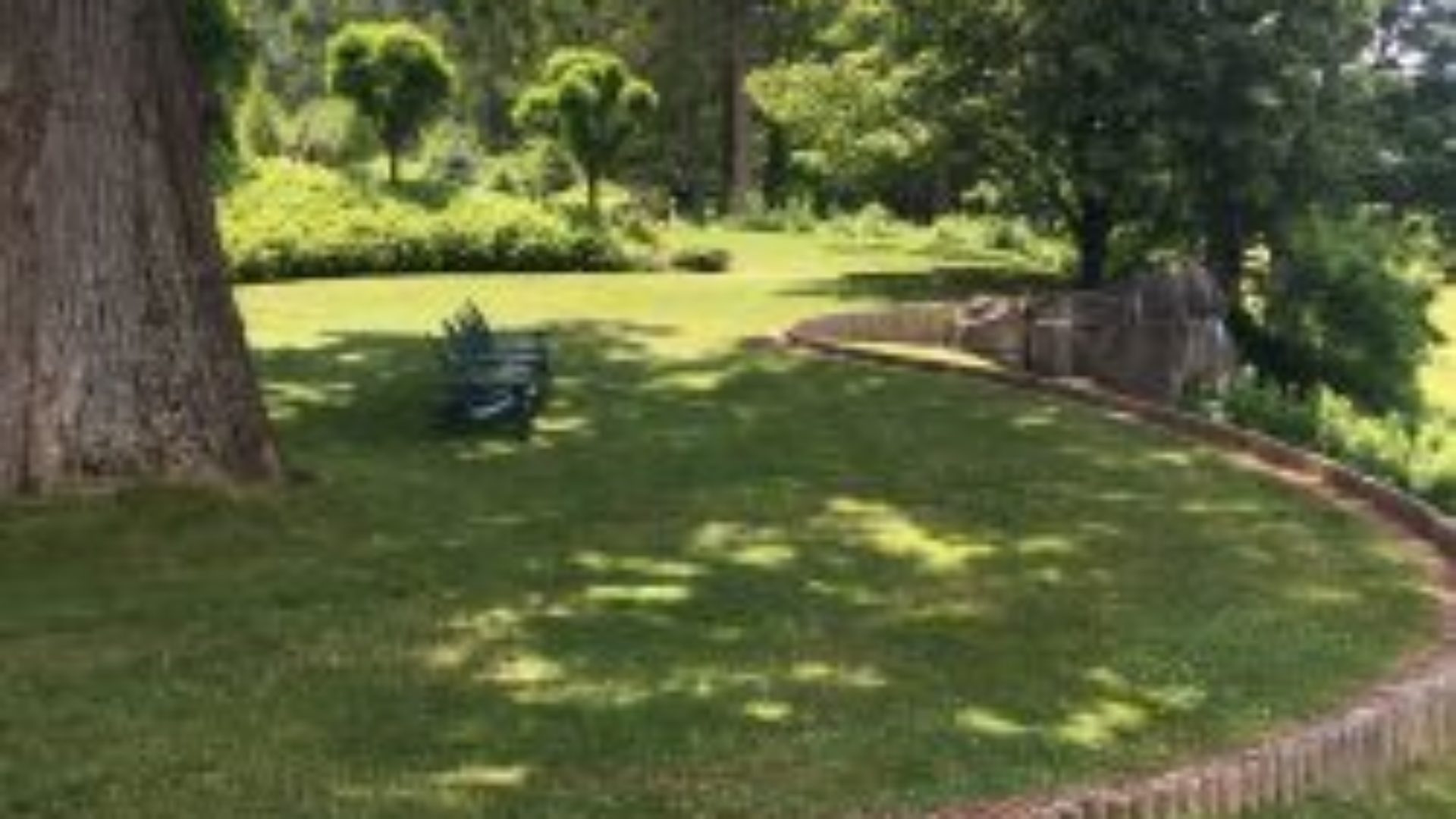Last summer I spent a few weeks in the United States, travelling round seeing friends and family. We visited Texas, Tennessee, North Carolina, Boston and the Berkshires, where we went to a delightful wedding. While we were there, we took in a couple of interesting gardens.
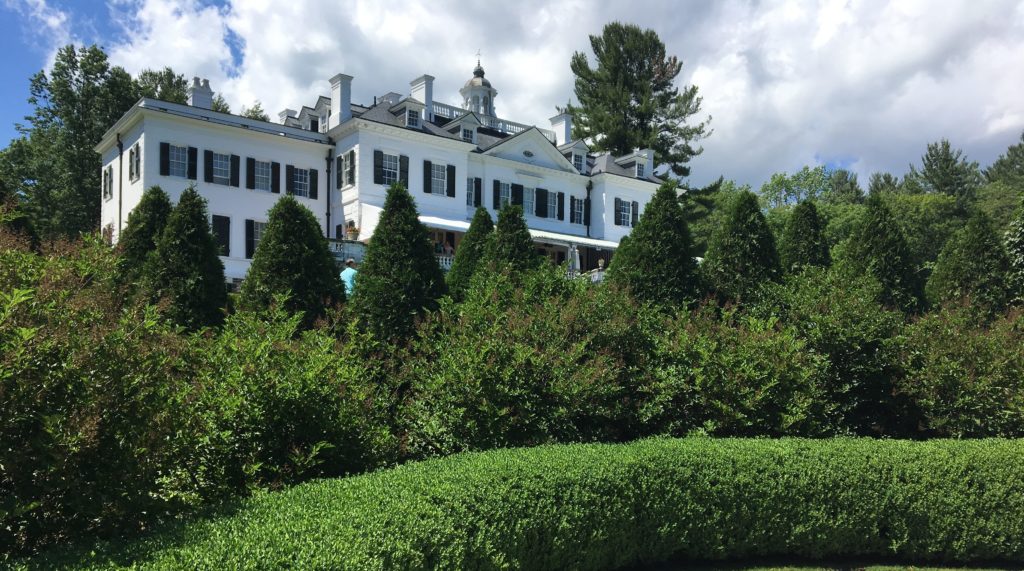
‘The Mount’ viewed from the garden behind its serried ranks of conifers
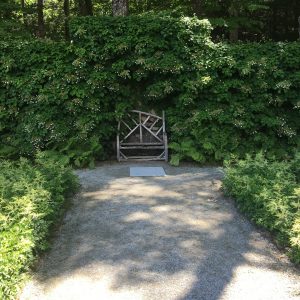
The very green-looking garden
The first was Edith Wharton’s house from 1902-1911, ‘The Mount’ in Lenox, MA. Although delightful, this was in many ways what you would expect a New England garden to be: derivative of European Gardens, but with the scale and confidence of American sensibility. Wharton reputedly designed the garden (and the house) herself, living there for only about a decade, but ploughing much of her earnings from her books into it. However, what is interesting about the differences between this and European gardens is the use of plant material. It is distinctly North American – the use of rank upon rank of spruces and other conifers in particular. In fact, one of the distinguishing things about the garden is its sheer greenness – we went there in late June and it felt really fresh, despite the high summer temperatures.
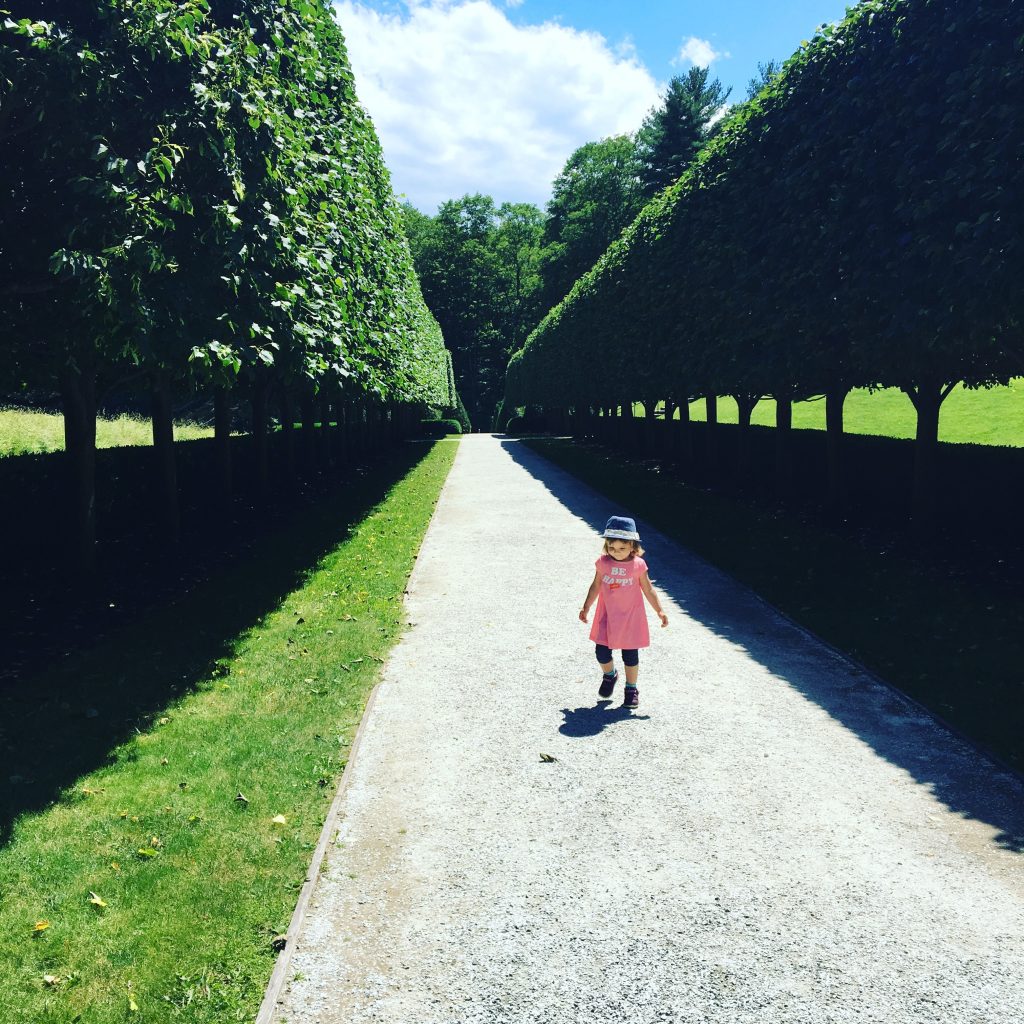
The main avenue cuts assertively through the garden parallel to the house.
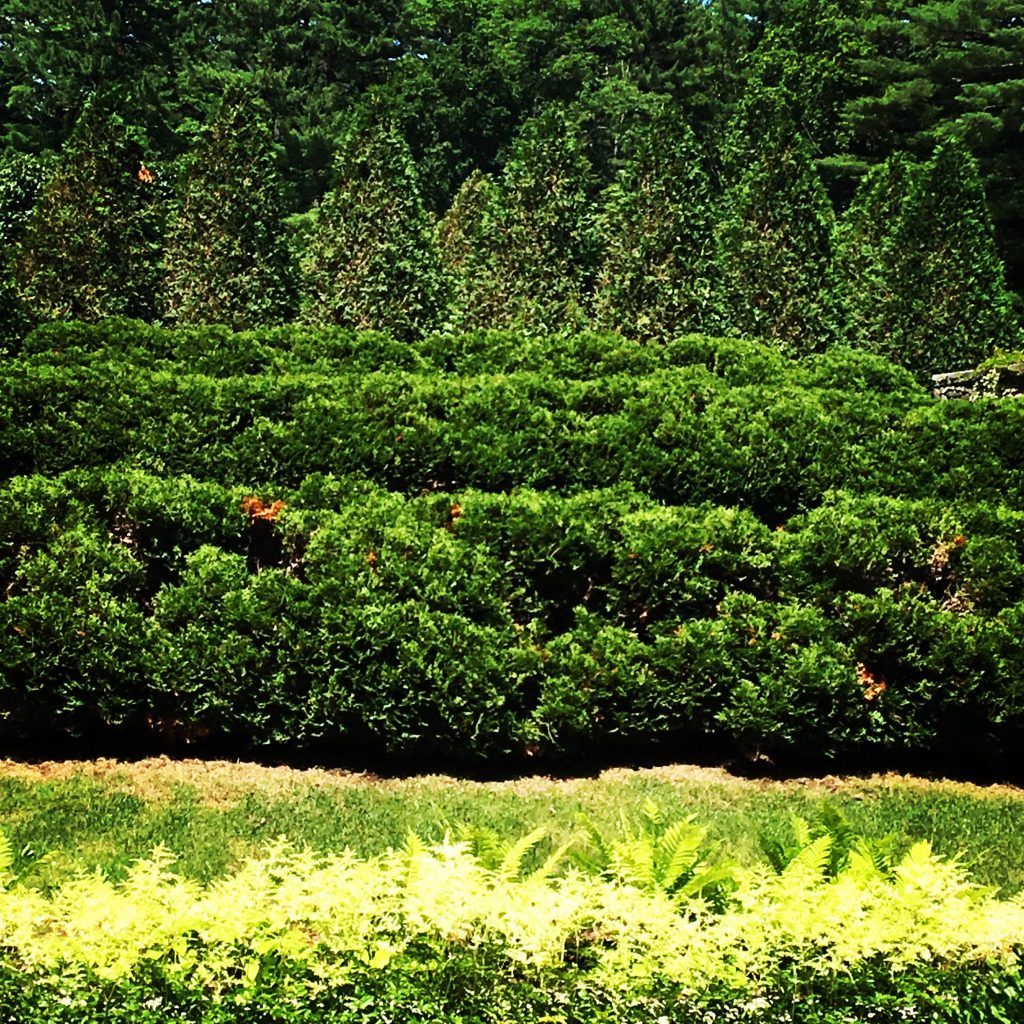
Interesting layering here – very American in style and plant choice (and noticeably C20th) but European in influence
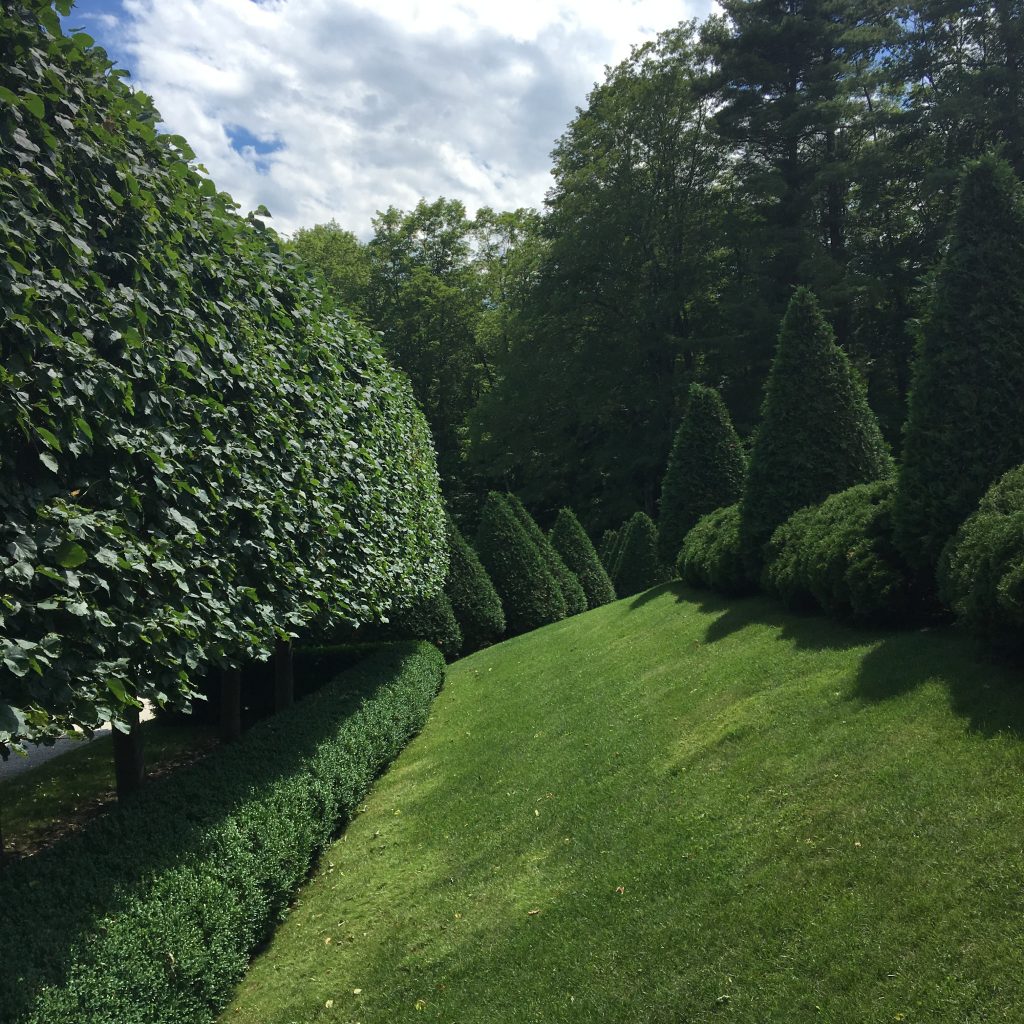
The interesting (but slightly scary) change in level between the main avenue and the formal gardens below the house.
I also like the arrangement of the formal elements, the way in which the main avenue cut through the design, masking sharp changes in level. The house sits on high ground and has a commanding view over the garden, as you might expect. Plenty of flowers here, surrounded by pleasant rolling park and woodlands. There is also a stone plaque, with a delightful inscription which almost serves as mantra for life: ‘In spite of illness, in spite even of the archenemy sorrow, one can remain alive long past the usual date of disintegration if one is unafraid of change, insatiable in intellectual curiosity, interested in big things and happy in small ways.’
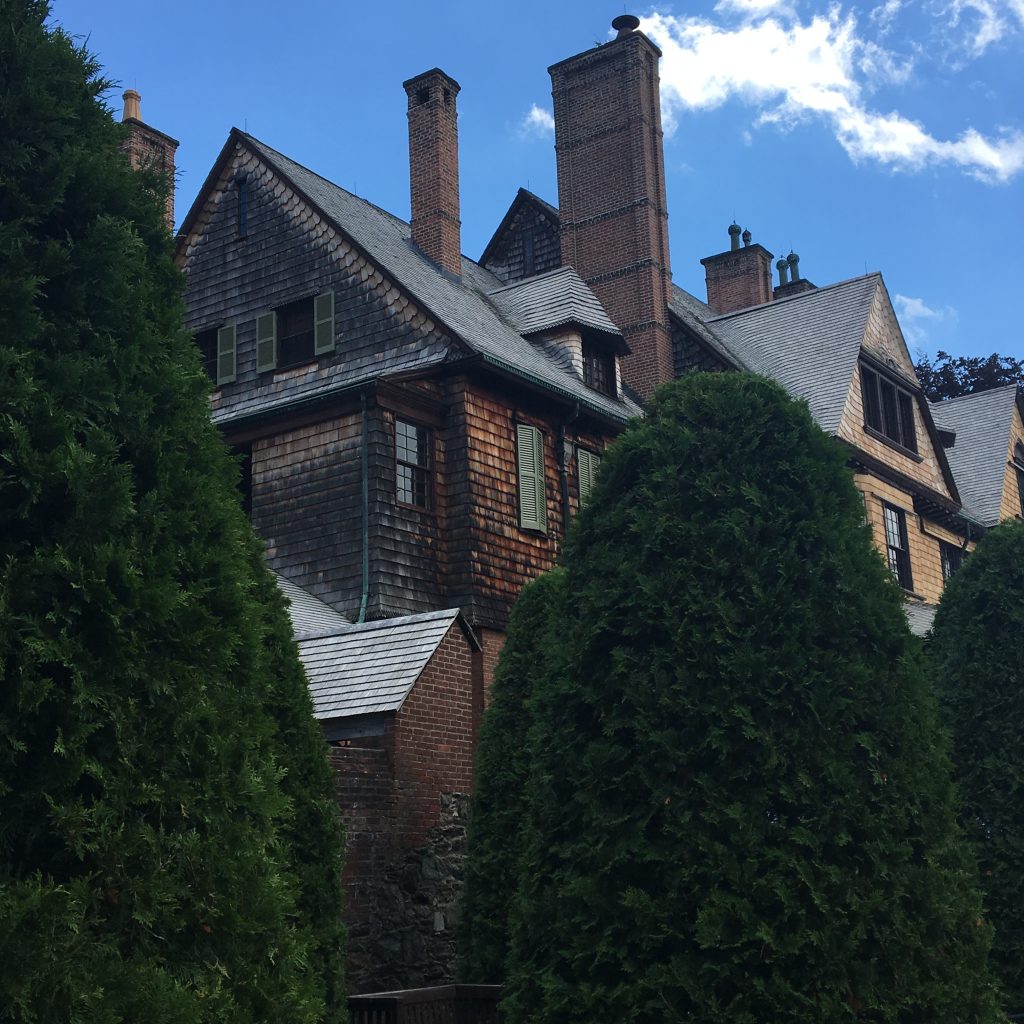
Naumkeag – actually a far more homely place than it appears here. Although grand, it did have the feel of a family house.
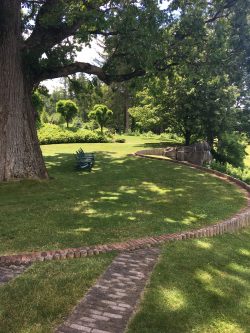
The Oak tree under which Joseph Choate picnicked as a child is the main feature of one of the terraces.
The second garden we visited was Naumkeag, in Stockbridge MA, just a few miles from The Mount. The name is of American Native origin, although it was originally the name of a people rather than a place. The house and garden have an interesting history. It was originally designed for a prominent New York lawyer, Joseph Choate and his family, although it was later much added to and changed by his daughter Mabel. Choate had a deep emotional involvement with the place, having picnicked as a child under a large oak tree whilst on summer vacation nearby with his parents. He later acquired the land and set to building a house and garden for his own family. Interestingly, the commission for the garden design was originally offered to Frederick Law Olmstead, but his designs were rejected after he suggested locating the house where the oak tree was situated – a lesson in ignoring a client’s brief perhaps! The tree still stands and forms a focal feature in the garden. Although the early gardens were laid out by Nathan Barrett in the 1880s, they were considerably expanded and altered after Choate’s death by Fletcher Steele over a 30-year period from 1925-1956 under the guidance of Choate’s daughter Mabel.
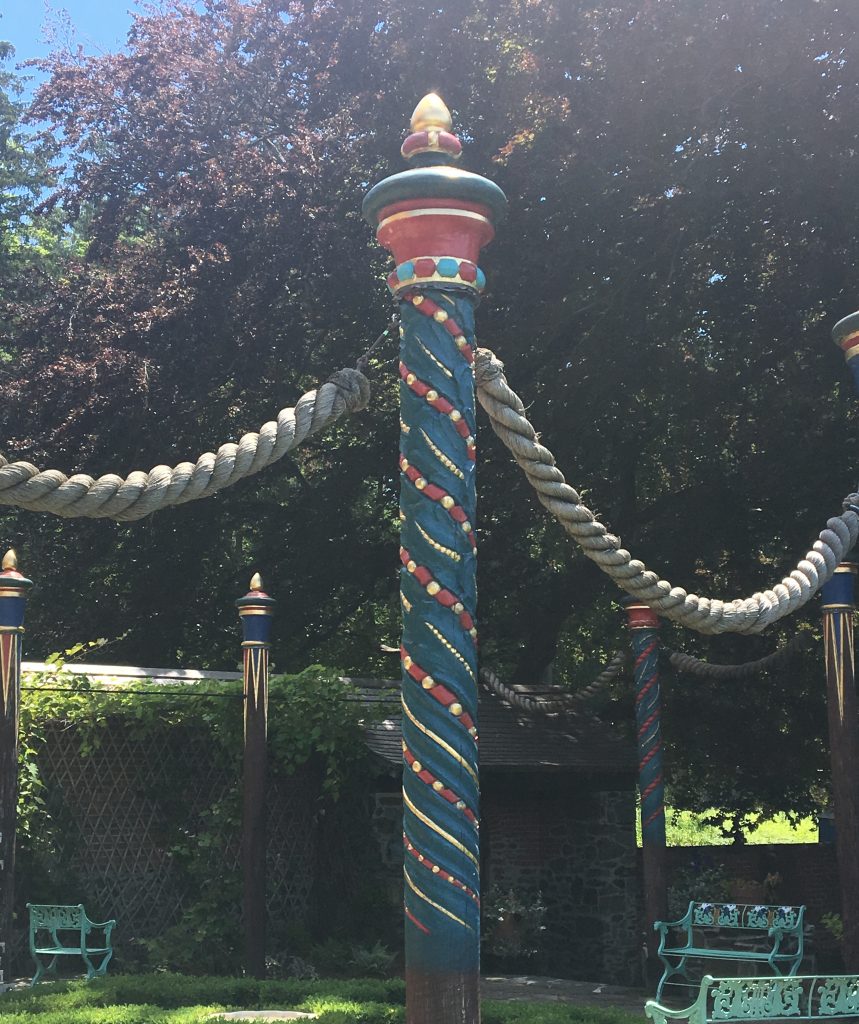
Not quite sure what the influence here is… Gondolas?
As with other New England gardens, Naumkeag draws deeply upon the European Well although there are also several very unusual features in the garden. The house sits high up on the lower shoulders of the hillside, with spectacular views over the valley. The ground falls away beneath it in a succession of levels down to the valley floor. Away to the left of the house (looking out) sits a curious eclectic garden a small parterre, and carved timber poles which could have come straight from Venice.
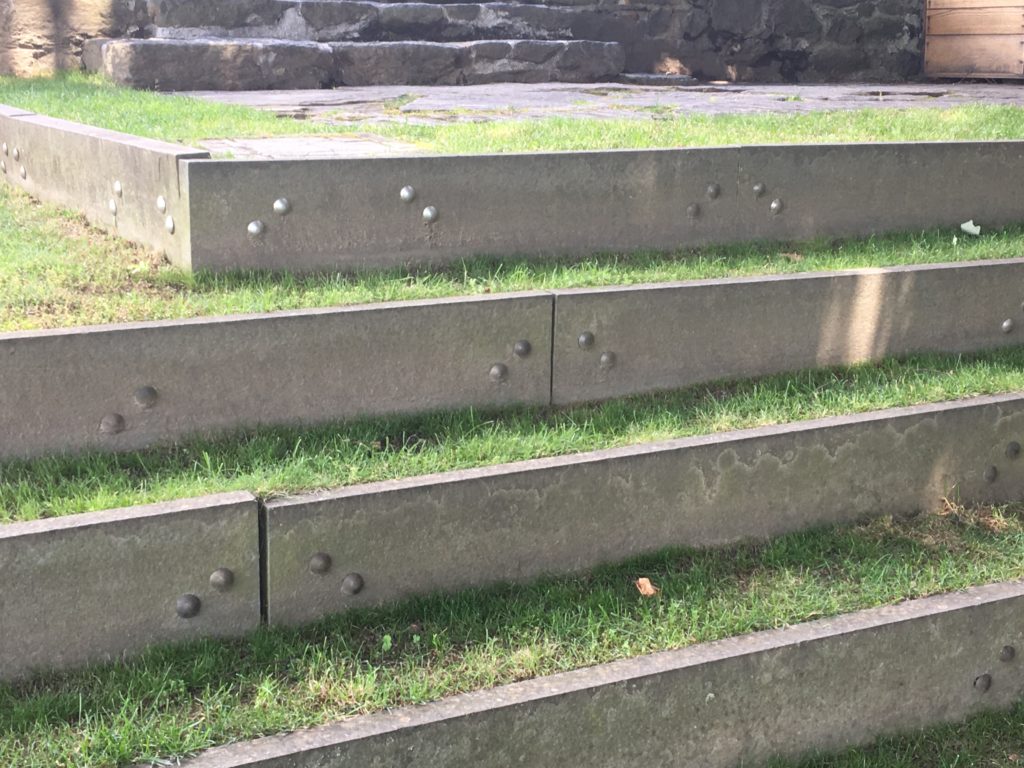
I really like these riveted slate steps.
From this, beautiful riveted slate steps lead down from one side to a terrace, with the oak tree sitting away to one side on the ‘picnic lawn’. A rill runs from this level right the way down through the garden. It is an interesting feature – the water first begins to flow over several regularly spaced steps.
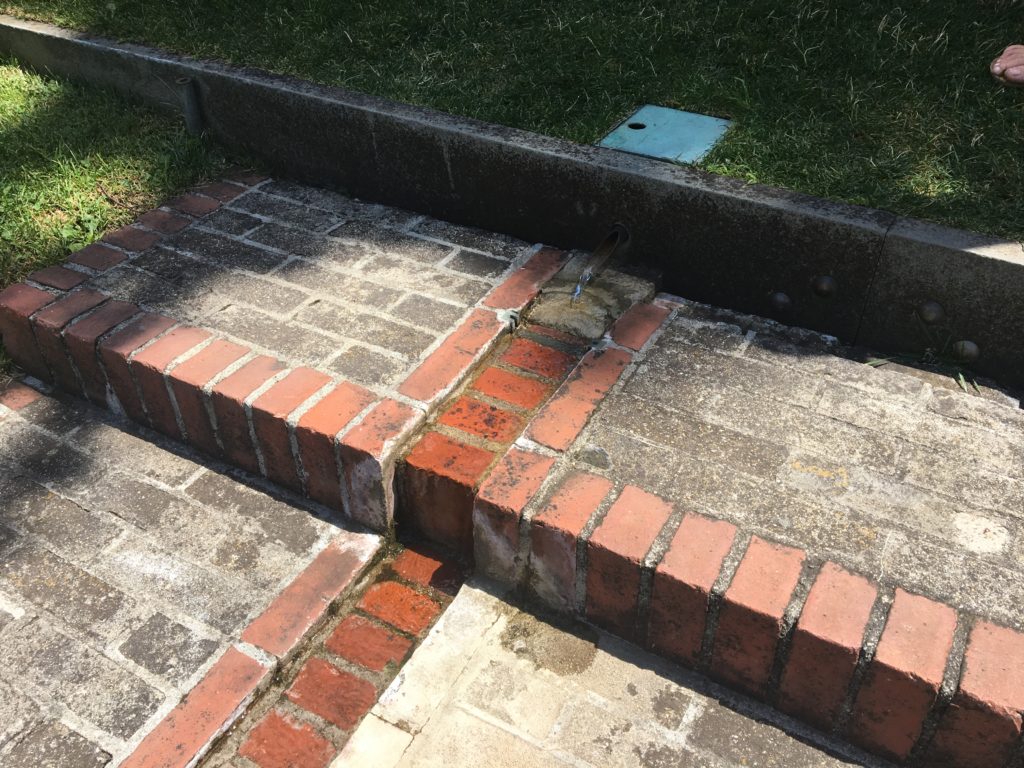
The beginning of the rill
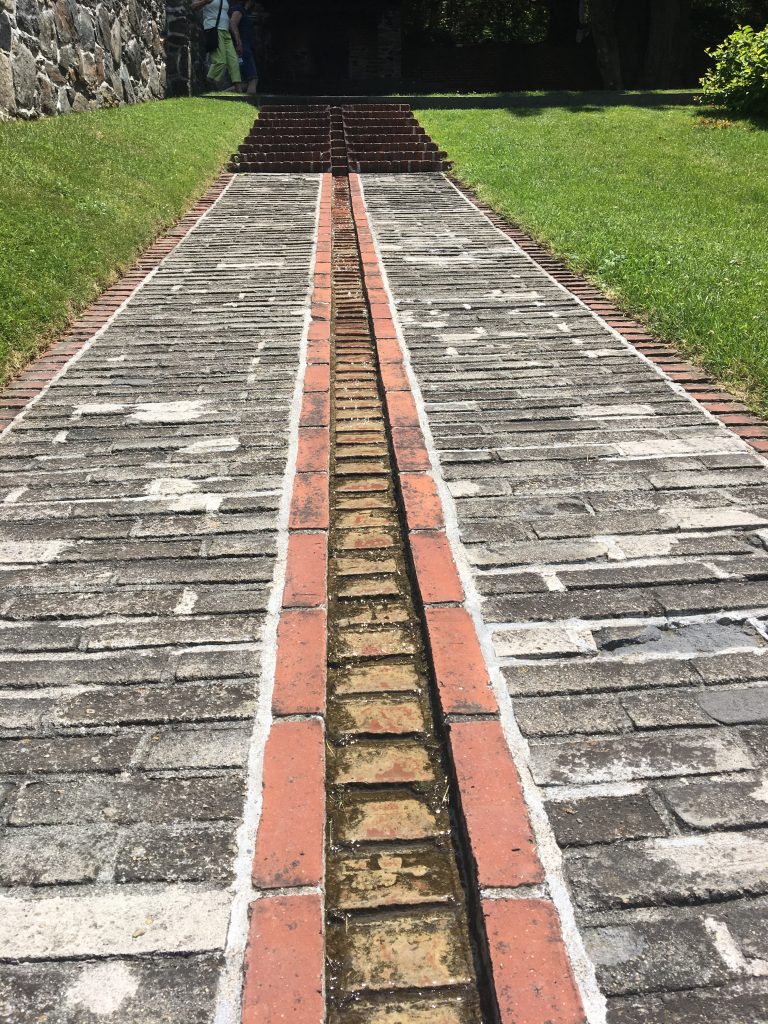
This rill takes the water on the first stage of its long journey through the garden.
These set up a pulse in the water which is still evident several metres further down the rill. However, it is the feature beneath this that is Naumkeag’s (and arguably Fletcher Steele’s) most famous feature – the ‘Blue steps’.
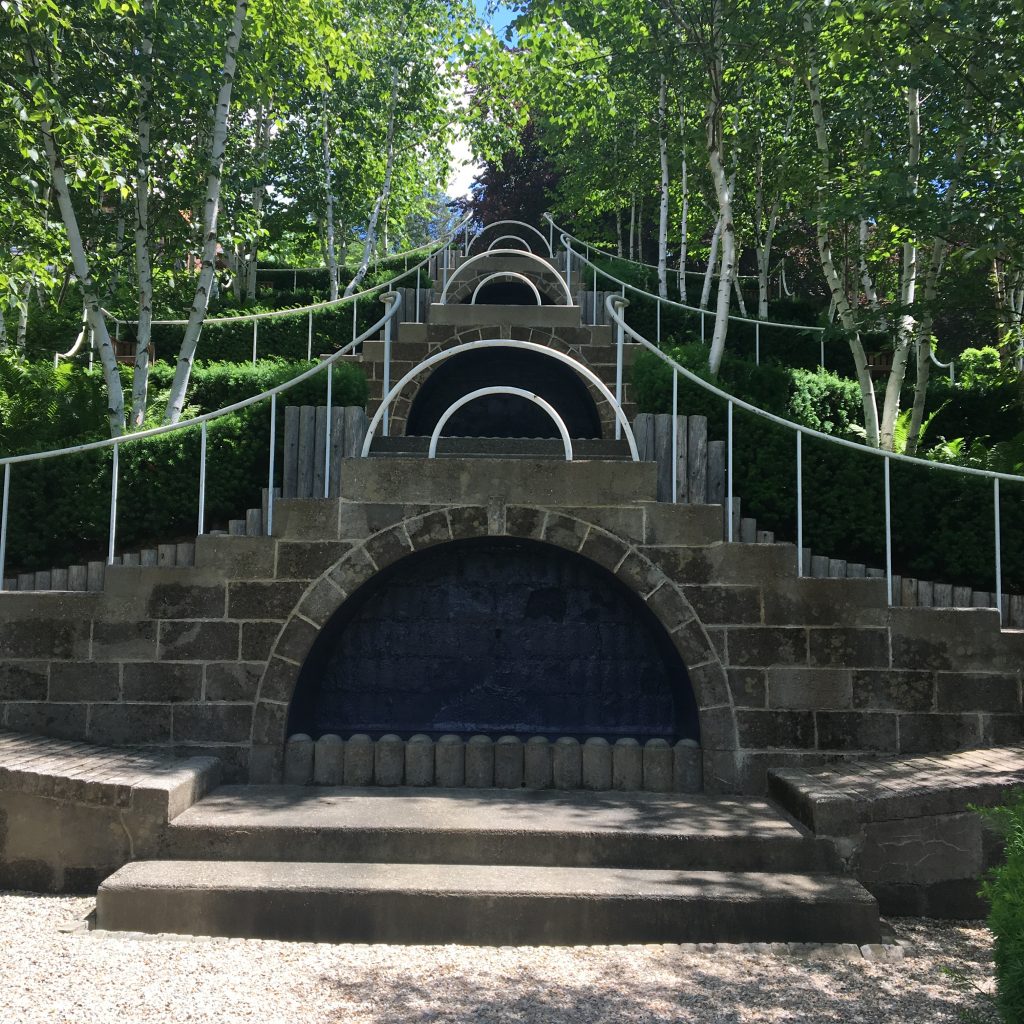
The famous blue steps. Note the logarithmic step riser and treads.
A central rill runs through the feature, with a series of arched grotto-like spaces with landings above. One of the things that make this such a fascinating feature is the logarithmic steps which descend sideways from each landing to meet at a lower landing below each grotto; ‘blue’ because of the concrete used (itself an unusual feature).
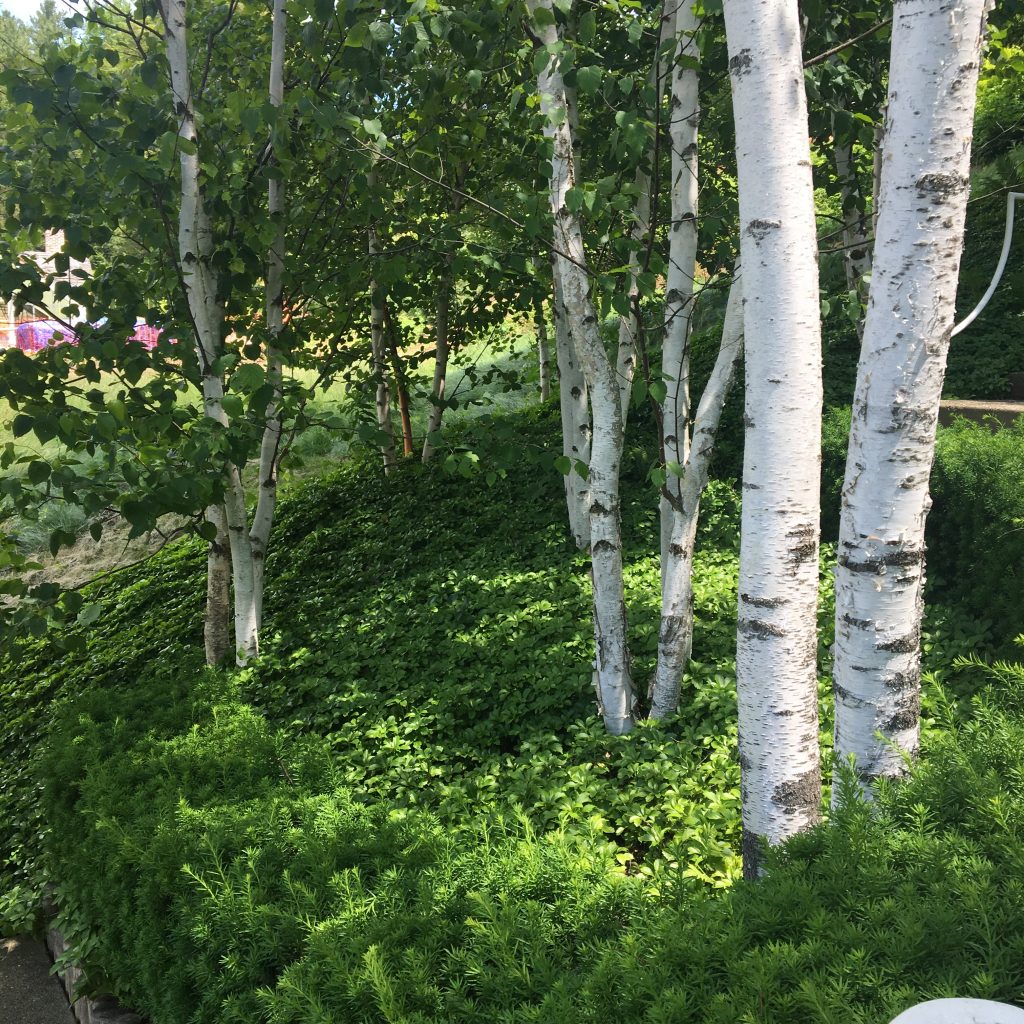
The pleasantly understated planting that is the setting for the blue steps
The setting is admirably restrained with simple undergrowth and Aspen trees. It is in stark but playful contrast to the ebullient delphinium beds beneath.
Naumkeag’s other famous feature is Steele’s last piece of work at the property – the rose garden, although to my mind this does not quite work. Although the shapes are interesting, the roses seem at odds with the design – indeed all the various elements feel at odds with one another.
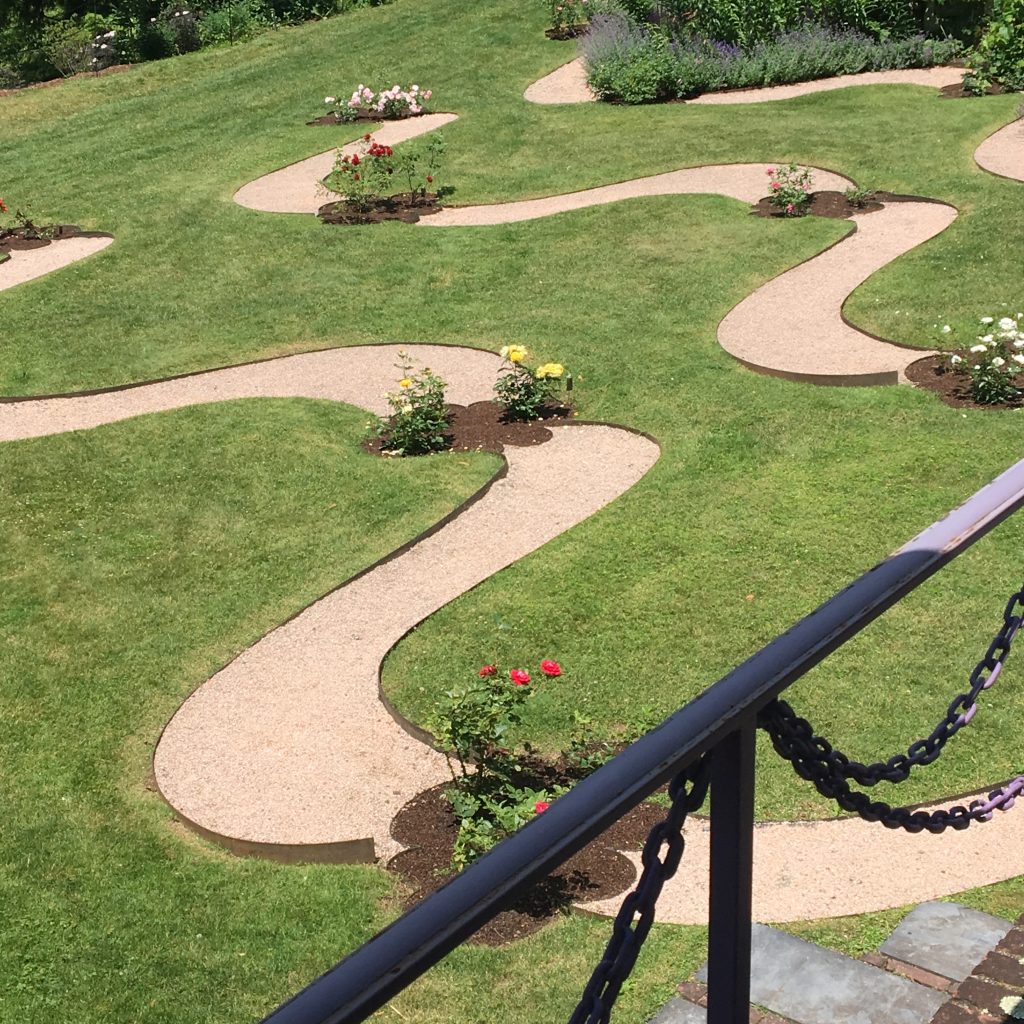
The rose garden – Fletcher Steele’s final addition
A much more pleasing feature is the formal garden below and to the right of the house. Here (as at The Mount) the interplay between European design and American plant material is at its most obvious. Steele plays skilfully with the serial views and perspective.
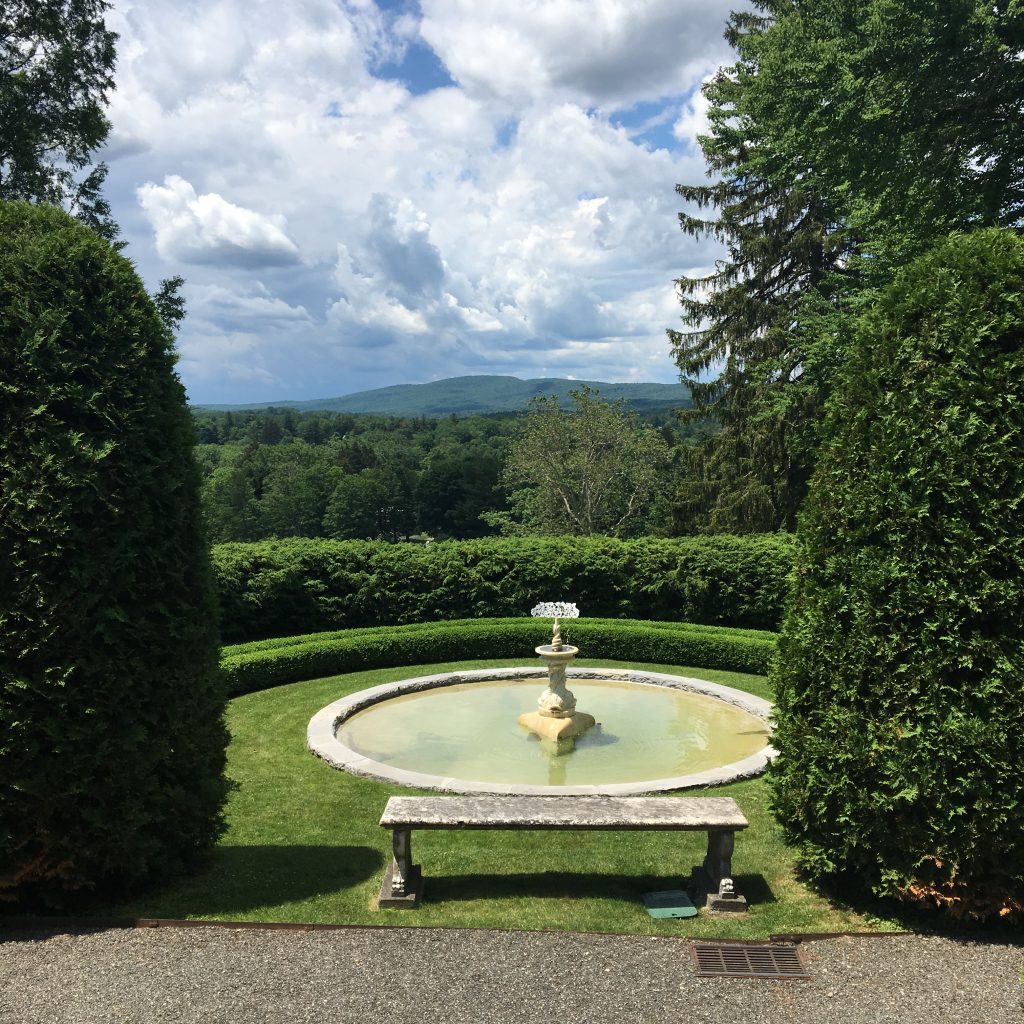 Above it towers a ‘thunder house’ very reminiscent of the one at Hidcote, although if anything rather better – certainly grander. It was supposedly a place for ‘assignations’ which could be both observed from the house but private at the same time. Finally, a (for me) disappointing Chinese garden – a mish-mash of imported ideas and titbits from the Far East.
Above it towers a ‘thunder house’ very reminiscent of the one at Hidcote, although if anything rather better – certainly grander. It was supposedly a place for ‘assignations’ which could be both observed from the house but private at the same time. Finally, a (for me) disappointing Chinese garden – a mish-mash of imported ideas and titbits from the Far East.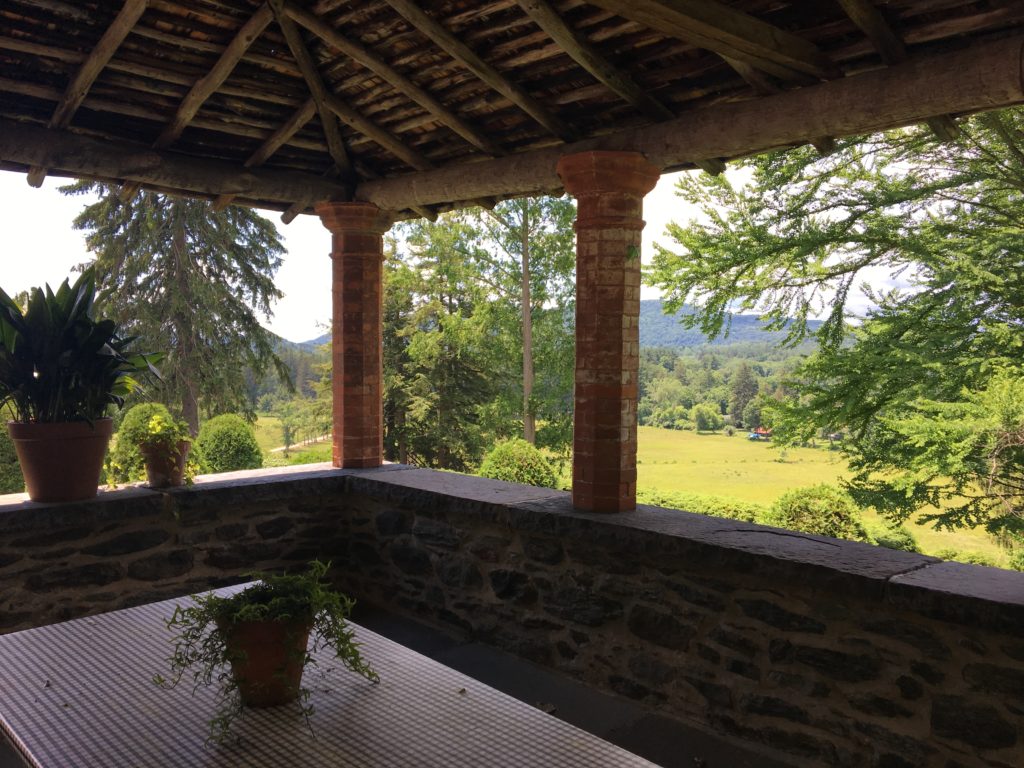
The view form the thunder house – supposedly used for ‘assignations’.
The curious thing about Naumkeag is that Steele was actually at his best when he wasn’t trying too hard. The picnic lawn, the formal gardens and the thunder house all have a comfortable elegance which is confident but accessible. The Chinese Garden, the Parterre and the Rose Garden on the other hand, all have a very self-conscious character which gets in the way of one enjoying them. The great exception to this is the blue steps, which is not only a masterpiece, but strikingly inventive and original.
If you are in Western Massachusetts at all, I would recommend a visit to both gardens, but particularly to Naumkeag.

